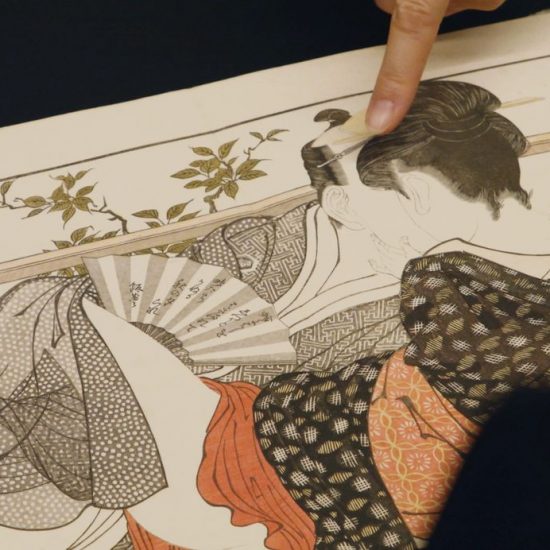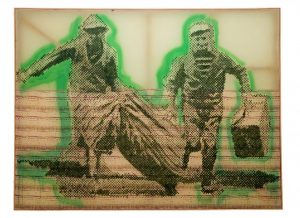One of the most iconic works of ukiyo-e is Hokusai’s 1814 print “The Dream of the Fisherman’s Wife,” which depicts a woman amid a sexual liaison with two octopuses. It is so familiar that its outré bestialistic imagery is somewhat diluted. The picture even appears in Mad Men (2007–15) as decoration in a Japanophilic advertising executive’s office. “I picked it for its sensuality, but it also in some way reminds me of our business,” he remarks.
This is just one example of shunga — or “spring picture,” with “spring” being a euphemism for sex — a category of ukiyo-e during the form’s heyday in 1600–1800s Japan. Junko Hirata’s Shunga (2023) is a foray into this world, touching on many less familiar works in the genre. Making its North American premiere at this year’s Japan Cuts, the documentary delves deep into shunga’s history, its continuing influence on Japanese art, and the relationship between “legitimate” art and pornography.
Shunga is one of the most pleasantly surprising nonfiction films to come along in a while, noteworthy for avoiding many of the pitfalls so many documentaries about art trip into. The genre feels bloated with 80-minute scans of movements and topics that reduce them to their most obvious talking points and historical referents, seemingly made to be watched in the background on a streaming service or pulled out for students on a slow day. But Hirata adopts a deliberate, methodical approach, presenting these artworks with the scrutiny of a curator. She’s not afraid of scenes in which experts speak at length about the finer details of specific prints, even leaving in their pauses in speech so the audience can absorb what they’re saying. The viewer is encouraged to think like a critic, to consider how choices in composition, linework, and color affect the impact of each piece.

Gratifyingly, the film also presents its risqué subject in a maturely straightforward, matter-of-fact manner. Shunga is full of cartoonish and bawdy imagery, some even more outrageous than “Dream of the Fisherman’s Wife.” There are humans with genitalia for heads, exaggeratedly large sex organs, incredibly explicit and fluid-rich renderings of coitus, and much more. It would be so easy to titter at this, to mock the illicit tastes of the Edo period’s chōnin class. Hirata is instead curious about the origins of such imagery, and how it ties into the broader trends of the era. Multiple artists, historians, and other talking heads assert shunga’s validity, but the film’s very construction makes the argument most strongly.
Another element bolstering shunga’s artistry is the close attention the film pays to how much labor went into creating these images. Ukiyo-e is a form of woodblock printing, meaning it melds painting and carving. One of the most mesmerizing sequences visits a modern woodblock artist who demonstrates what a delicate process it is to render hair — including pubic hair — in the ukiyo-e style. It’s painstaking, intricate work. Shunga is a rare documentary about art that will do more than provide a crash course; it might just turn you into a learned appreciate of fine art pornography.


Shunga (2023), directed by Junko Hirata, will play as part of Japan Cuts at Japan Society (333 East 47th Street, Midtown East, Manhattan) on July 13.




